
Fig 1.1
Crop: banana
Scientific name : Musa spp
Common / Local Name :
Banana –Khela
Local varieties: Amti, Raspali, velchi, Saldatti, savaboni, Myndoli, Sugandi (link to pictures)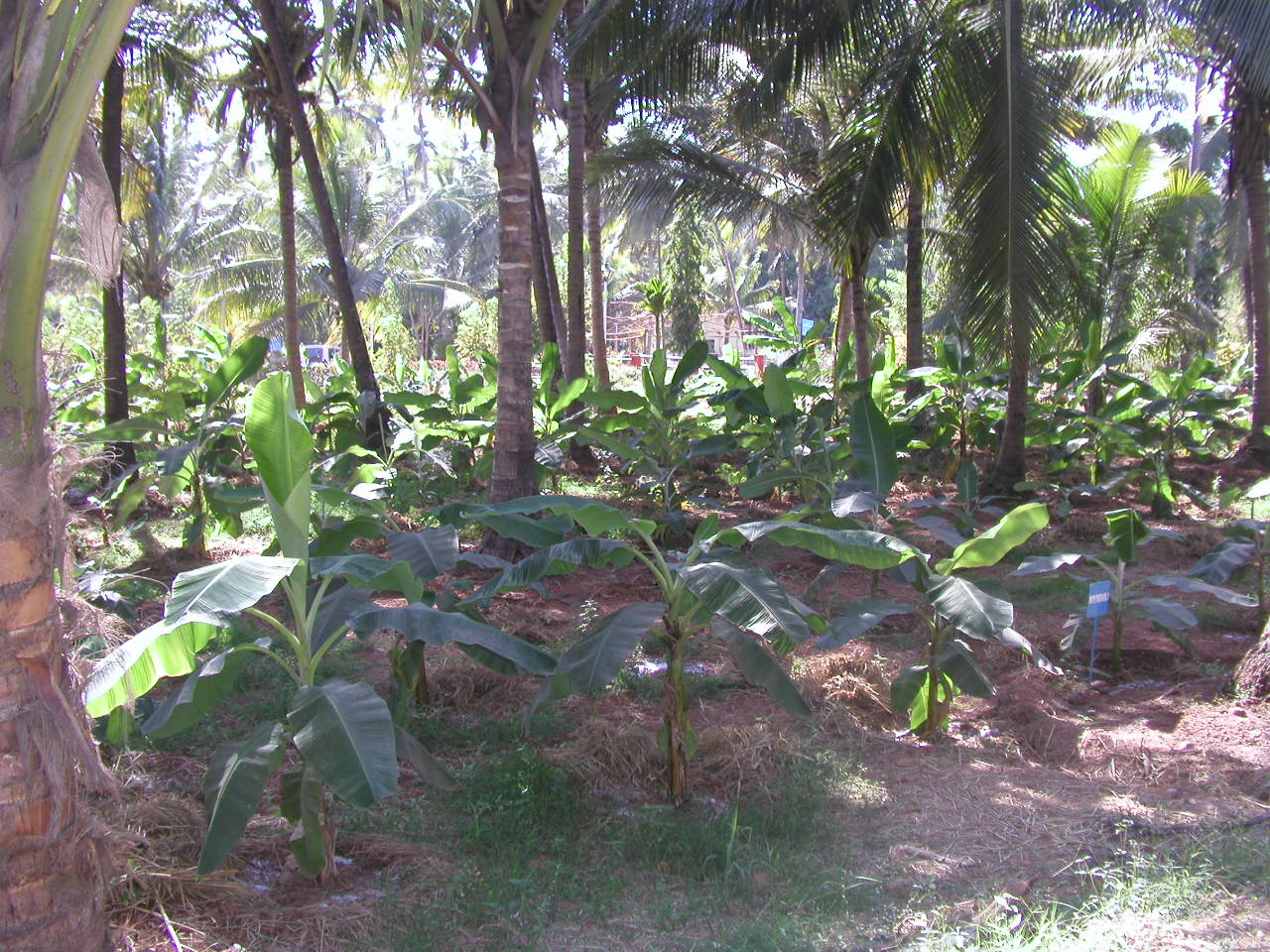
Banana is one of the important fruits commercially cultivated in Goa under open as well as coconut plantation. In Goa, it is cultivated in an area of 2,342 hectares with total production of 23,420 tonnes/year. Banana can be cultivated in sandy loam to clay soil. Banana is well suited for cultivation under humid, tropical high rainfall zone.
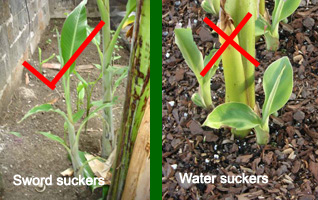
The land should be ploughed well and pits of 60 m3 should be dug out. In Goa, it is cultivated in all type of soils. Sword suckers with well developed rhizomes weighing 500 to 750g are used for planting
Conventional suckers or tissue culture plants should be planted at a spacing of 2x2m. Before planting, rhizome or sucker should be dipped in Bavistin (0.1%) solution. Around 10kg of FYM along with 5 g of Furadon granules should be applied per pit before planting
Planting three suckers per pit at a spacing of 2x3m yield up to 80t/ha in Grand Naine (picture). This aids in over all mat or hill management rather than individual plant management. The individual bunch weight gets reduced; however, the total yield per hectare increases more than double fold, due to higher plant population. A high density banana plantation needs to be maintained by fertigation system to realize higher profit.
Ampti (Mysore), Raspali (Silk), Velchi (Ney poovan), Saldatti (Saba), Savarboni (Bluggoe), Myndoli (Horn Plantain) and Sugandhi (Pisang awak) are the cultivars commercially cultivated in Goa besides Cavendish varieties like Grand Naine, Dwarf Cavendish and Robusta.
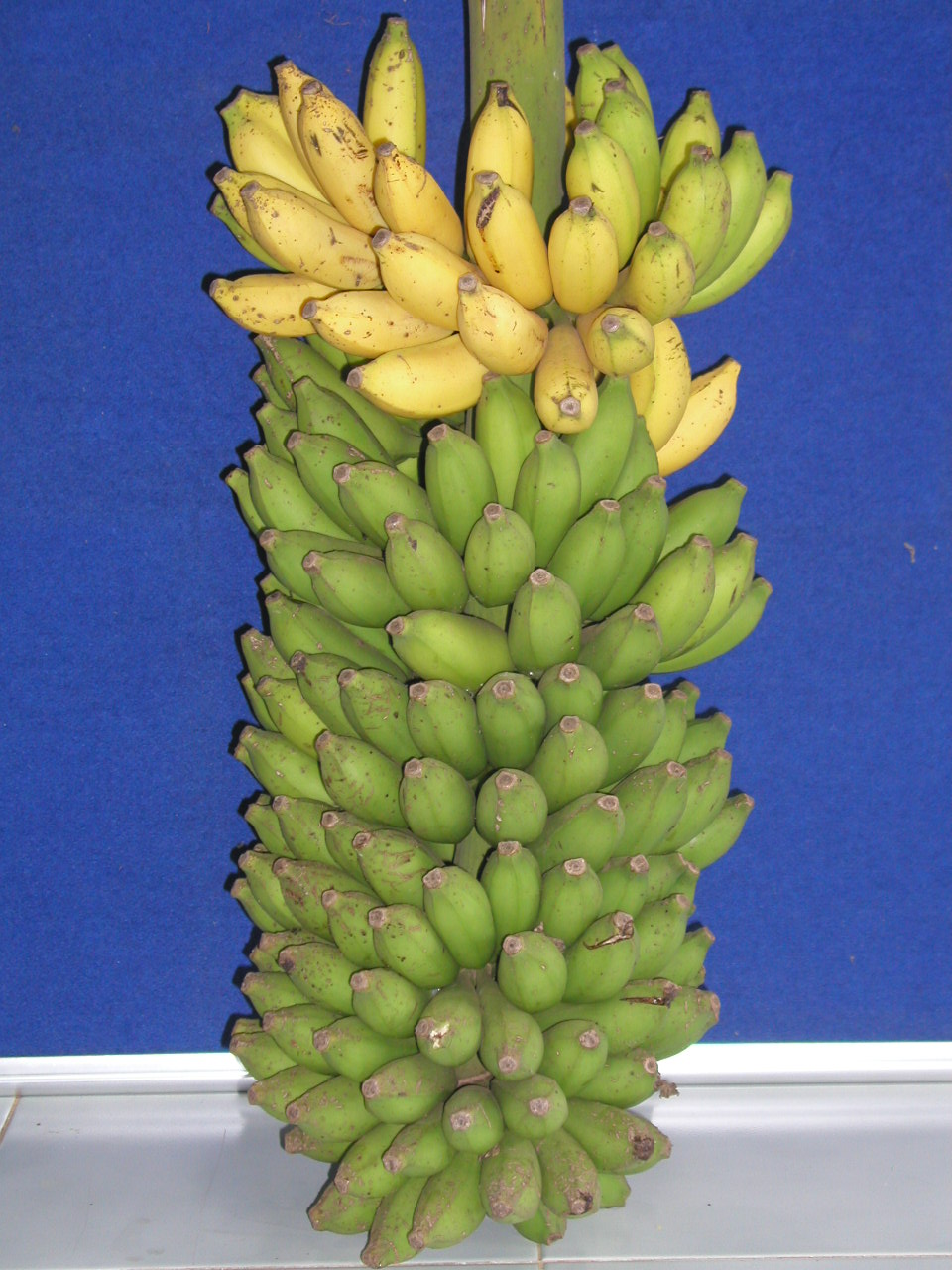
Amti
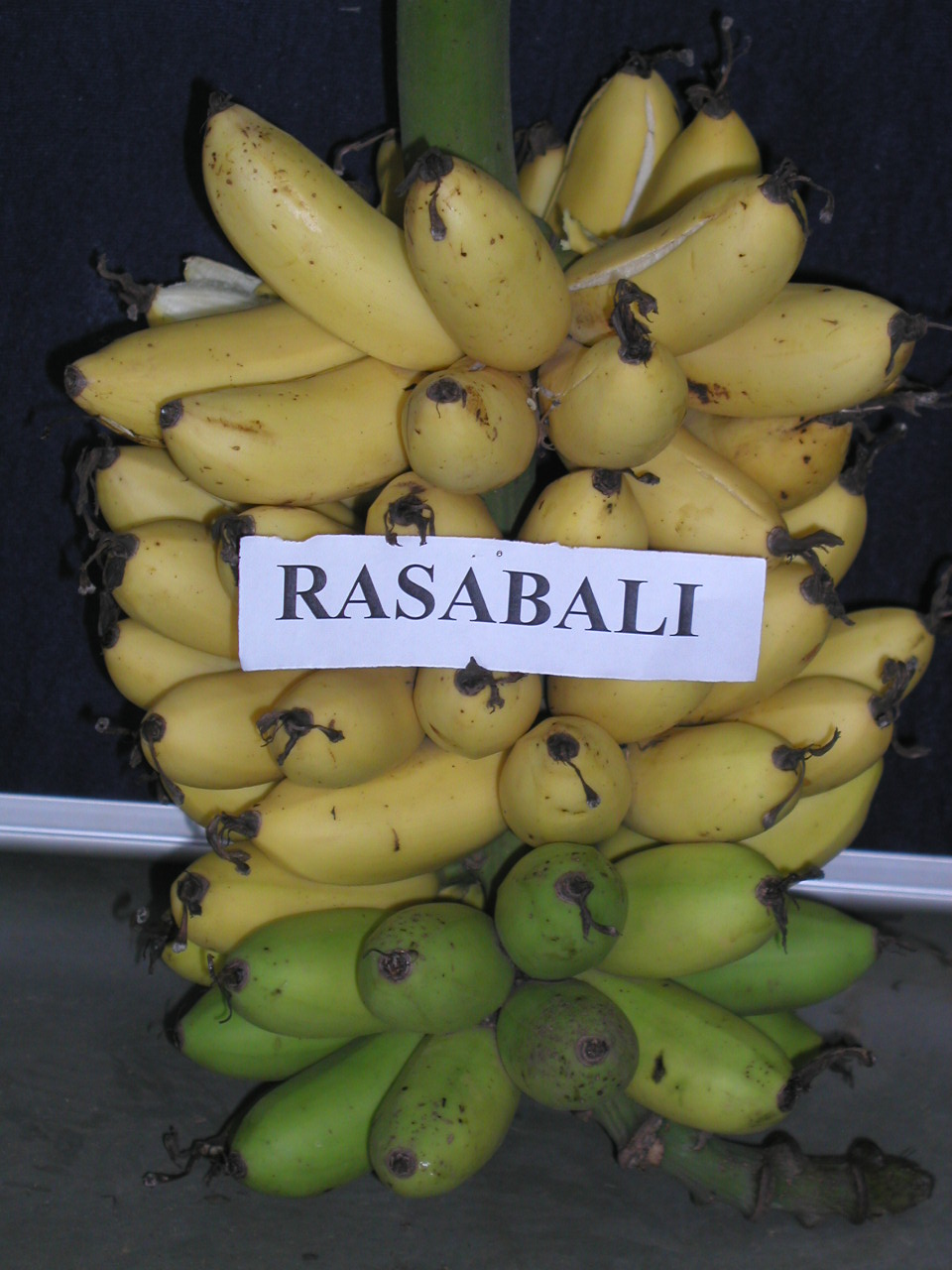
Raspali
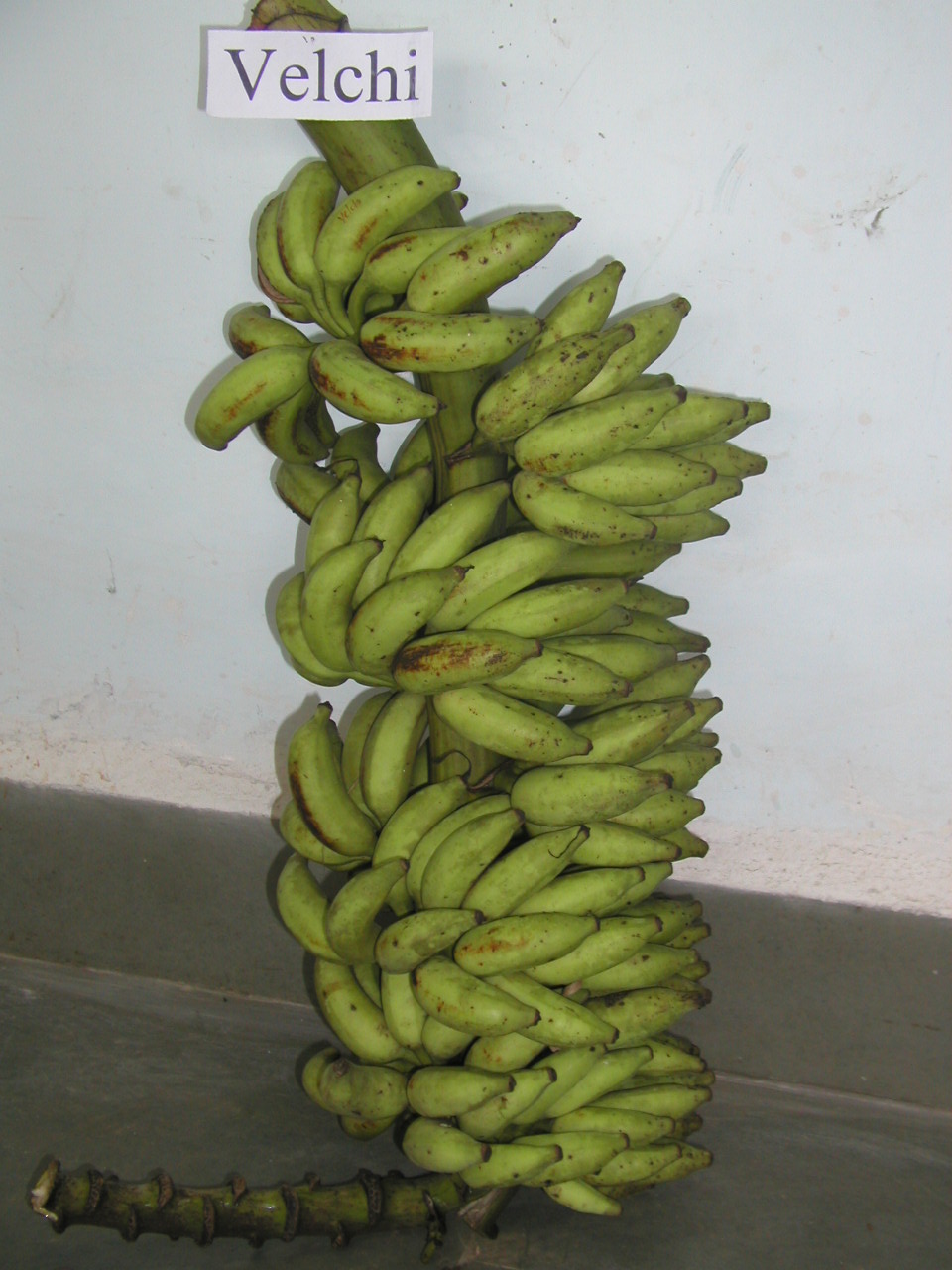
Velchi
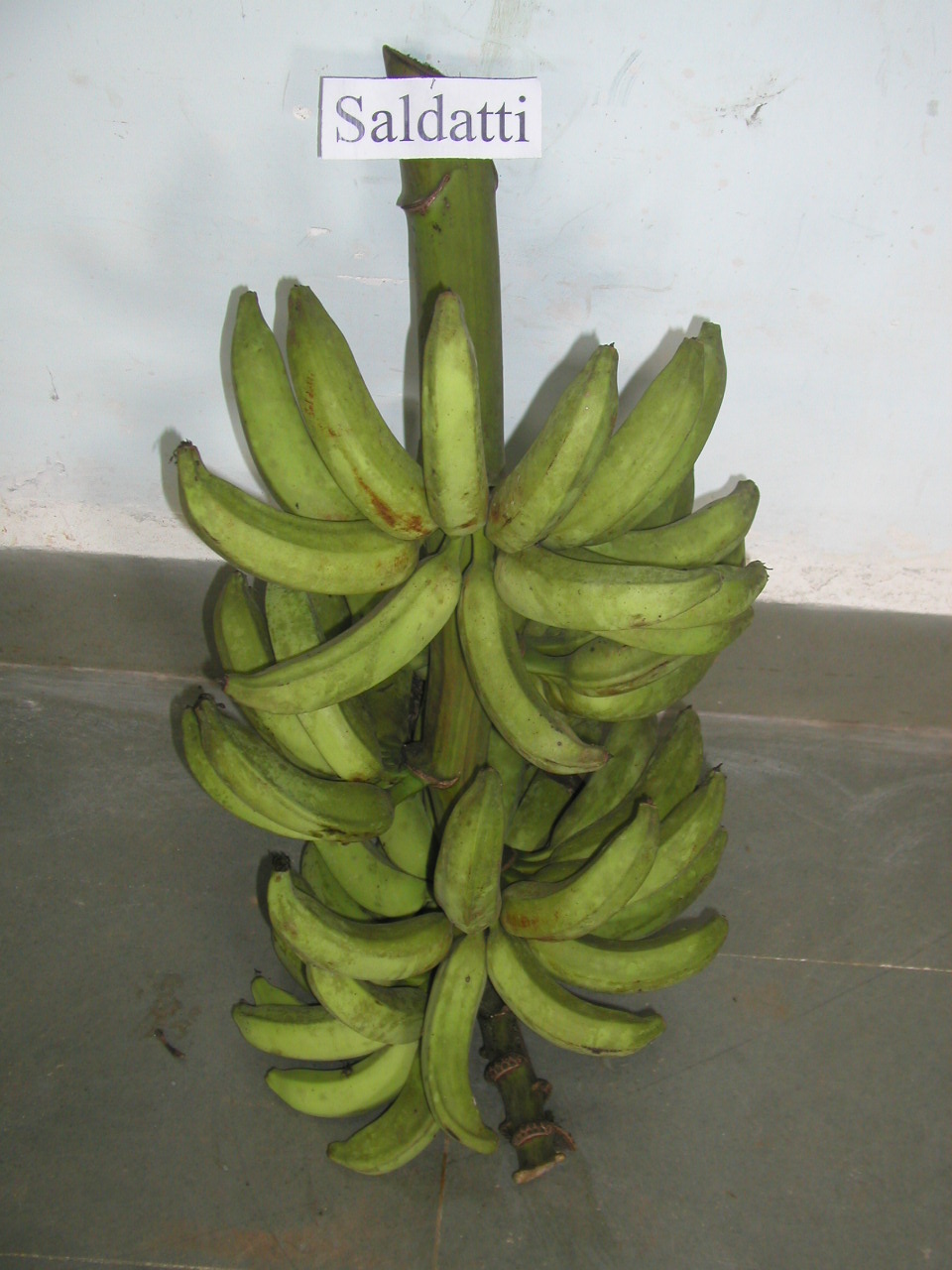
Saldatti
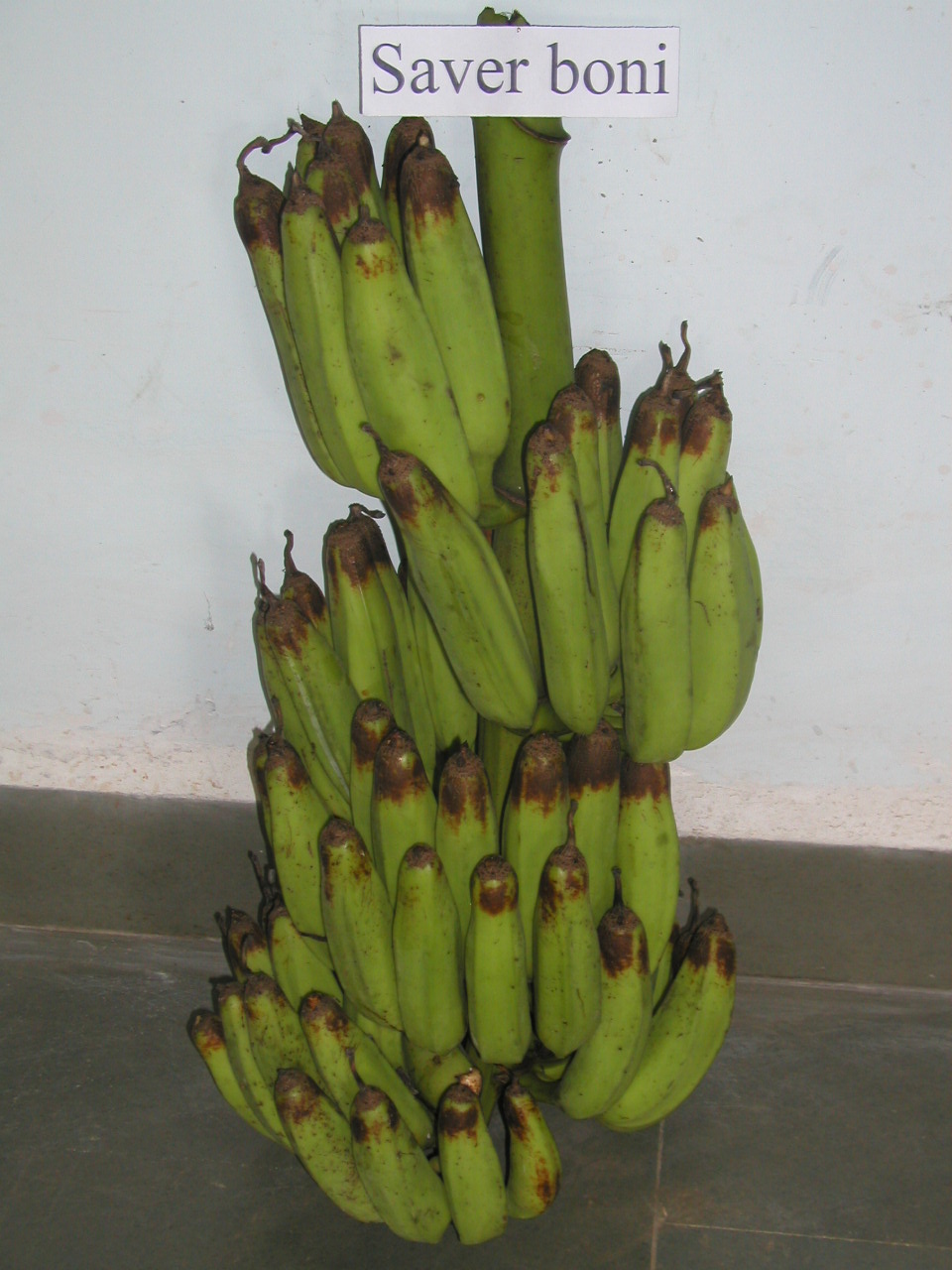
Savarboni
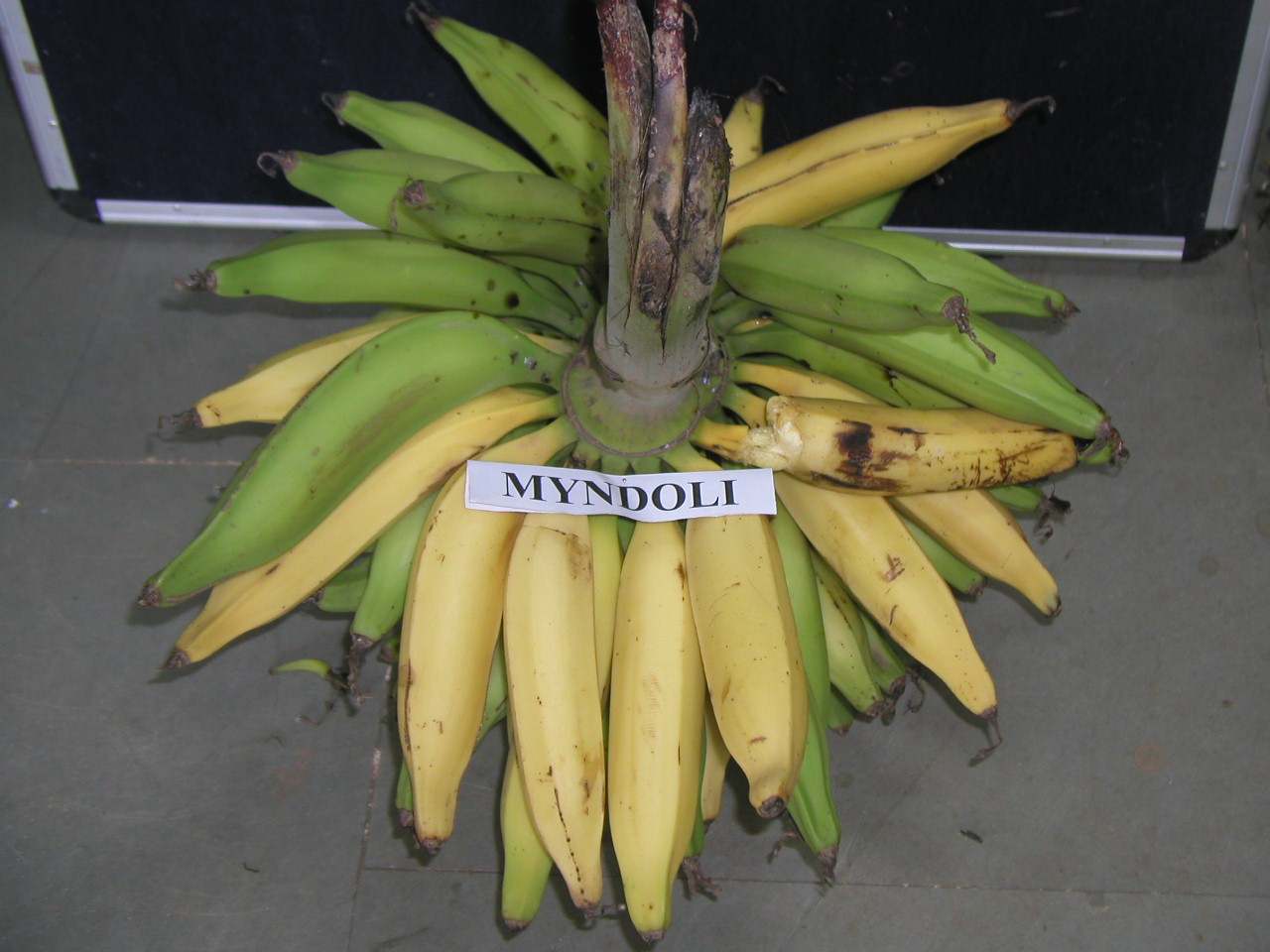
Myndoli
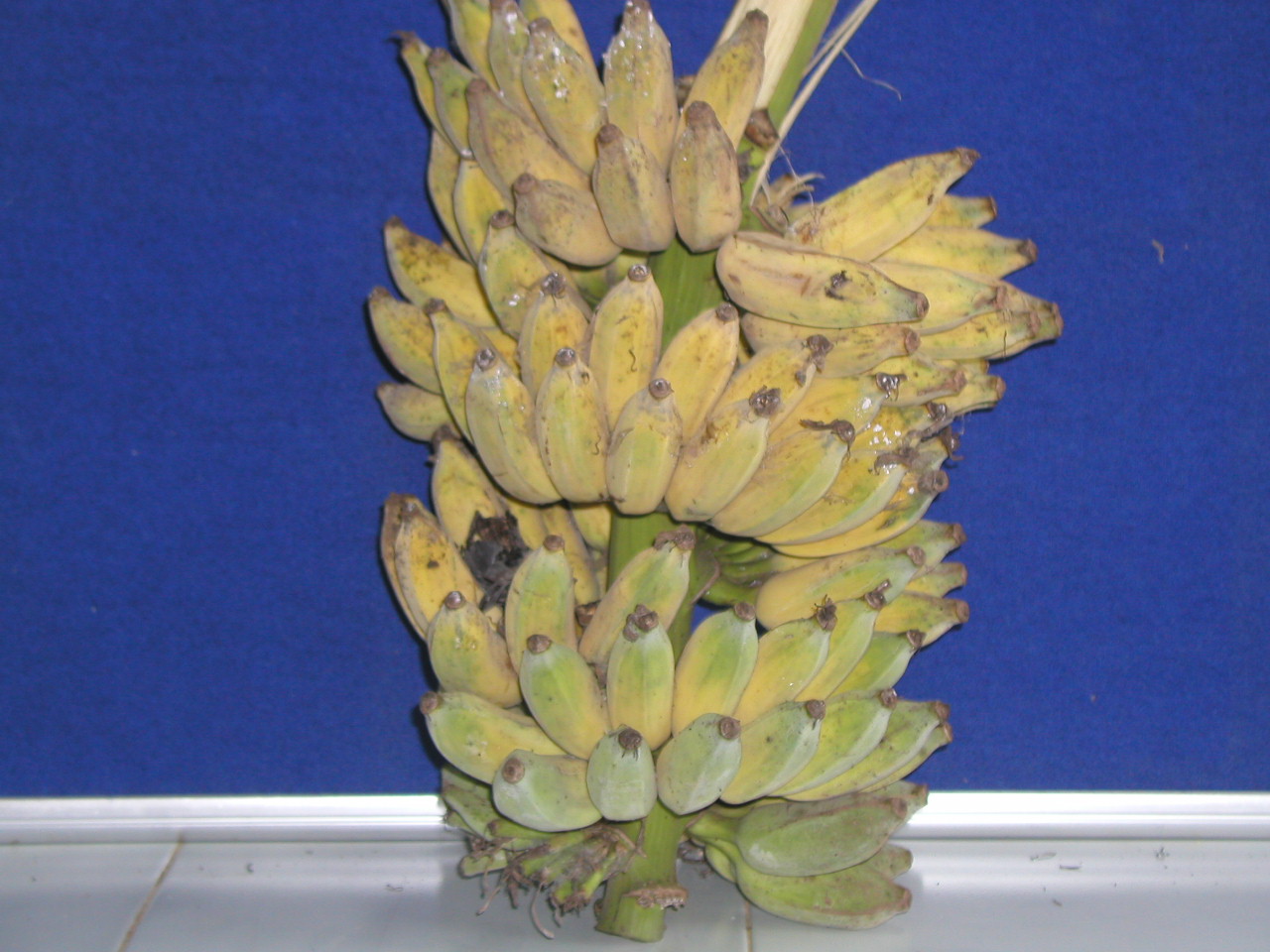
Sugandi
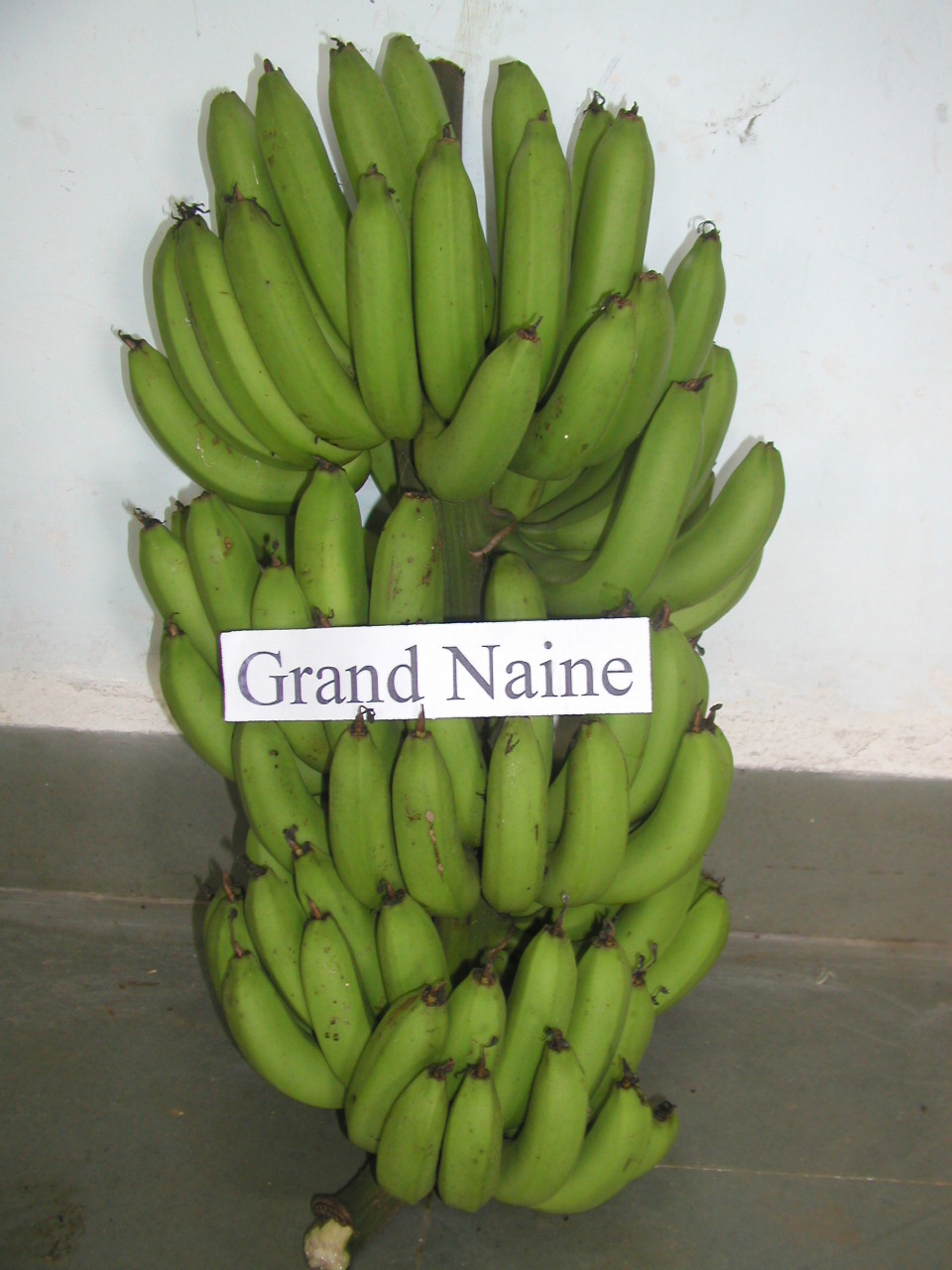
Grand Naine
Recommendation: Myndoli + Grand Naine+ Velchi (or)
Savarboni + Amti + Velchi (or)
Raspali + Amti + Velchi (or)
Saldatti + Amti + Velchi (or)
Grand Naine + Velchi
A fertilizer dose of NPK @ 400:200:400g/plant/year applied in three split doses during 3rd, 5th and 7th months after planting is recommended for effective vegetative growth, timely flower initiation and appreciable yield. Micronutrient like Zinc @ 40g/plant along with Borax @ 10g/plant induces early flowering and higher bunch weight.
Irrigate once in 3-4 days
Weeding as and when required to keep field clean
Desuckering once in 45 days is a common practice to be followed. The suckers should be removed along with rhizomes with out damaging the mother plant.
Mulching helps to conserve soil moisture and is beneficial for root growth.
As the plants grow, dried lower leaves are to be removed periodically. For maximum yield, a minimum of 13 functional leaves are required to be retained on the mother plant.
To avoid lodging of plant, propping should be done with bamboo poles immediately after bunch emergence.
Removal of male bud after completion of female phase referred as “Denavelling�?has to be done.
I. Sigatoka Leaf Spot
Causal organism: Mycosphaerella musicola
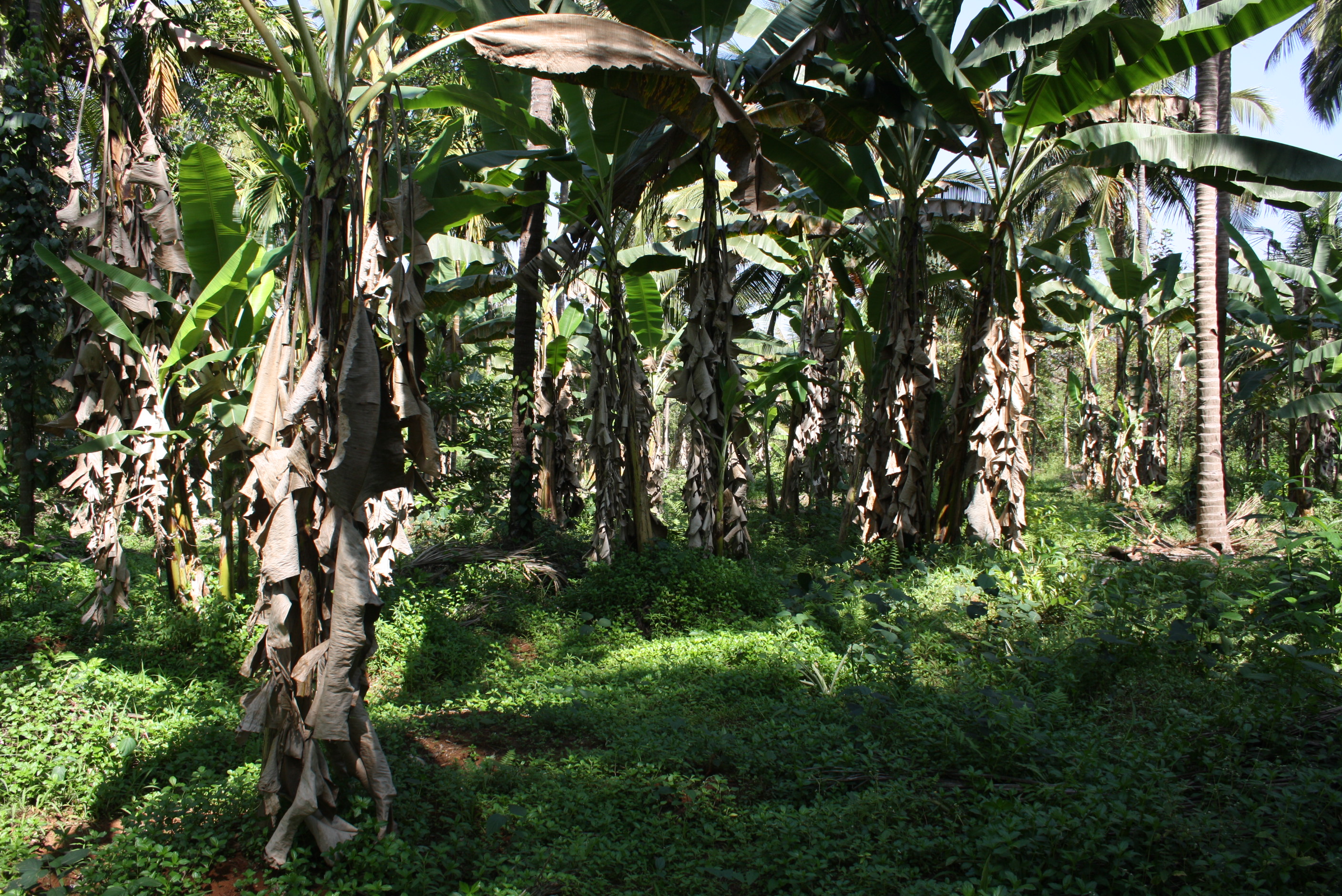
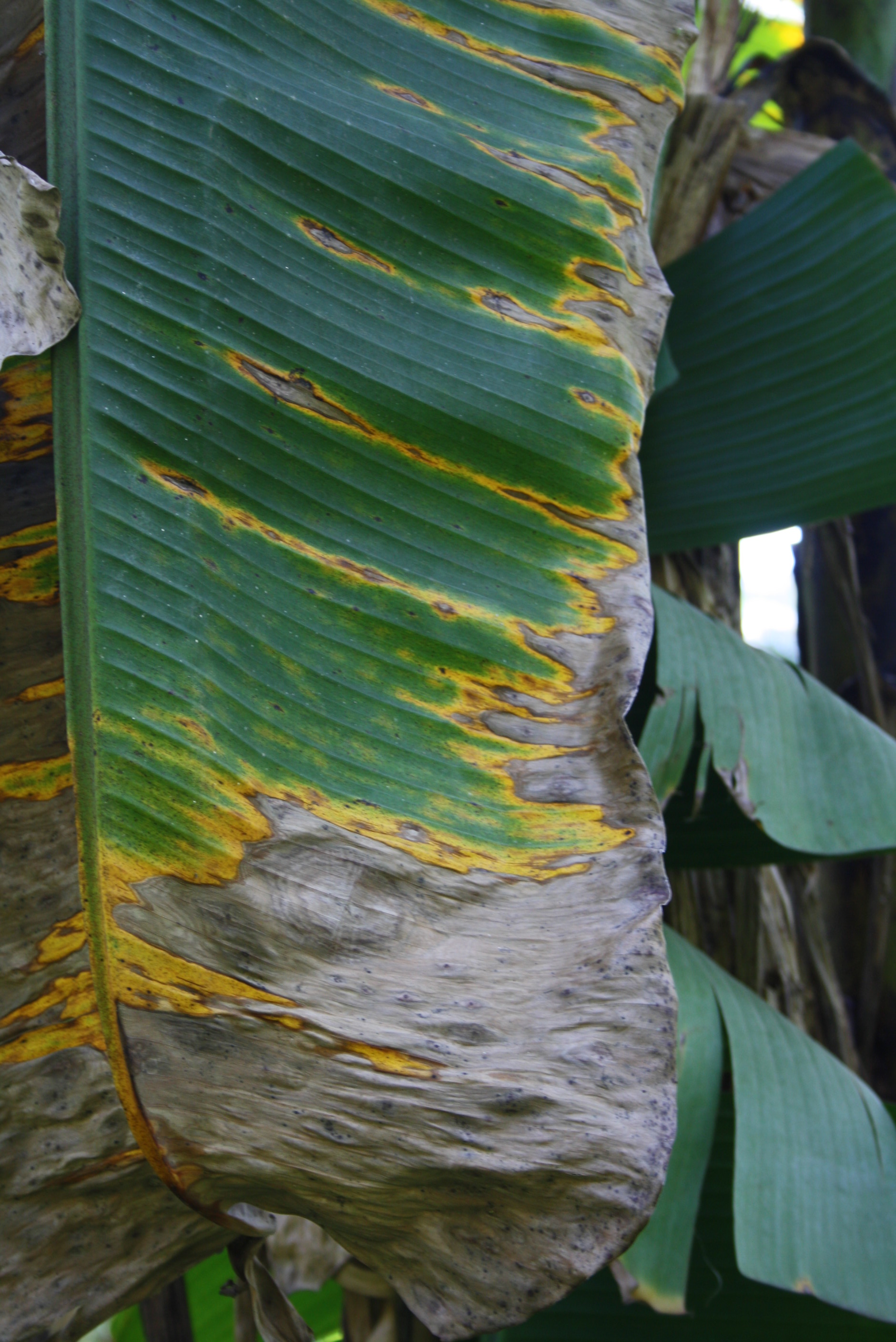
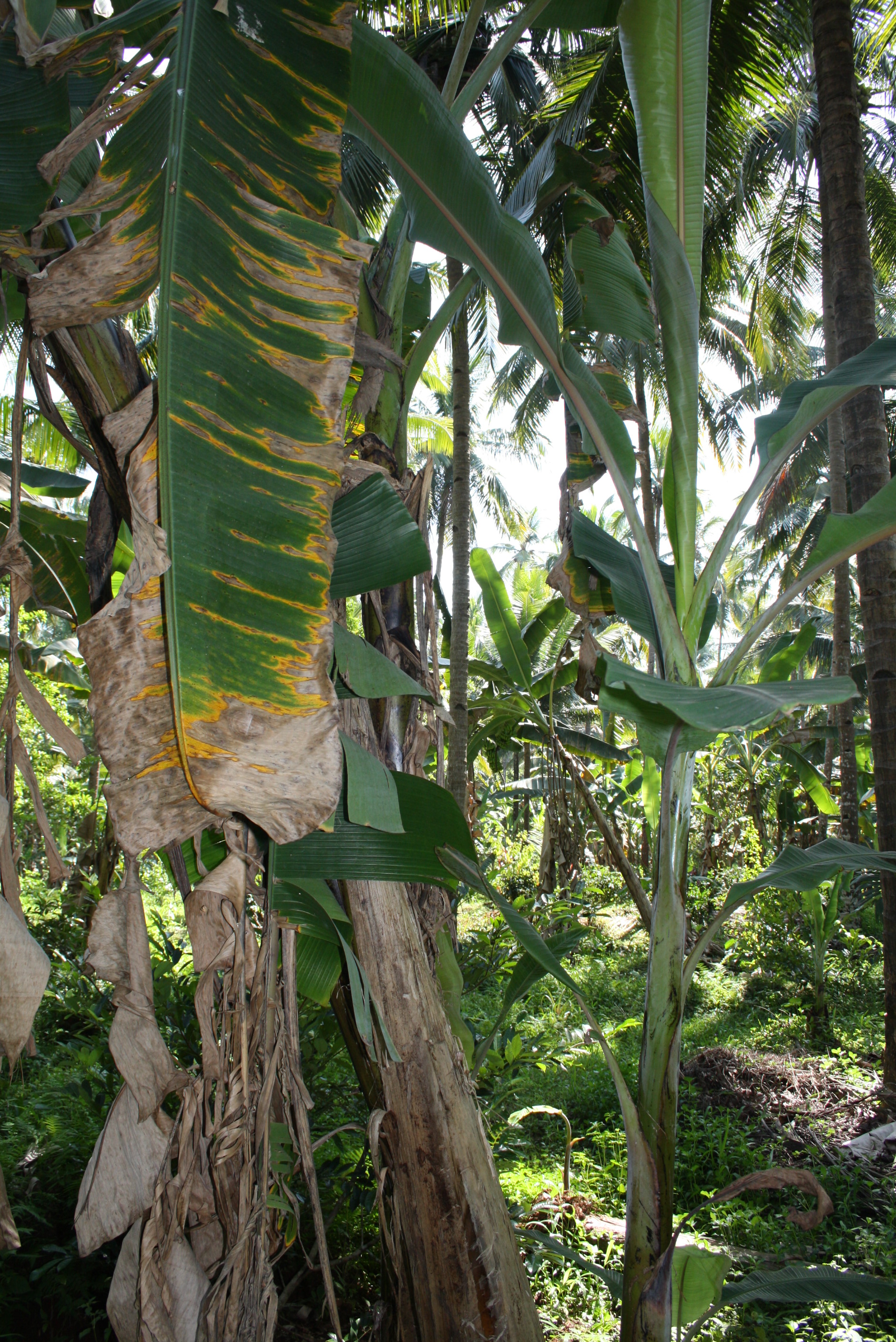
Symptoms:
- The disease is characterized by the faint yellowish spots on the leaves which enlarge and become oblong and later on turn into dark brown streaks that lie with their long axis parallel to internal venation of leaf.
- Later on the streaks enlarge and turns light gray which is surrounded by a narrow brownish red zone.
- The spots on the lower leaves of young plants are dark brown and oval to circular.
- On the upper surface of light–grey spot centres, black specs of conidia are produced.
- In several cases, numerous spots coalesce, cause rapid drying and defoliation.
Management
- Improve the drainage, control weeds, remove suckers and provide proper spacing to reduce the humidity in the plantation.
- Remove the severely infected leaves and burn them.
- Spray Indofil M-45 @ 2.5g/litre water with sticker or spray Bordeaux mixture (1%).
- Spray carbendazim (0.2%) or thiophanate methyl (0.1%) as prophylactic and curative measure.
II. Bunchy Top of Banana
Causal organism: Banana Bunchy Top Virus (BBTV)
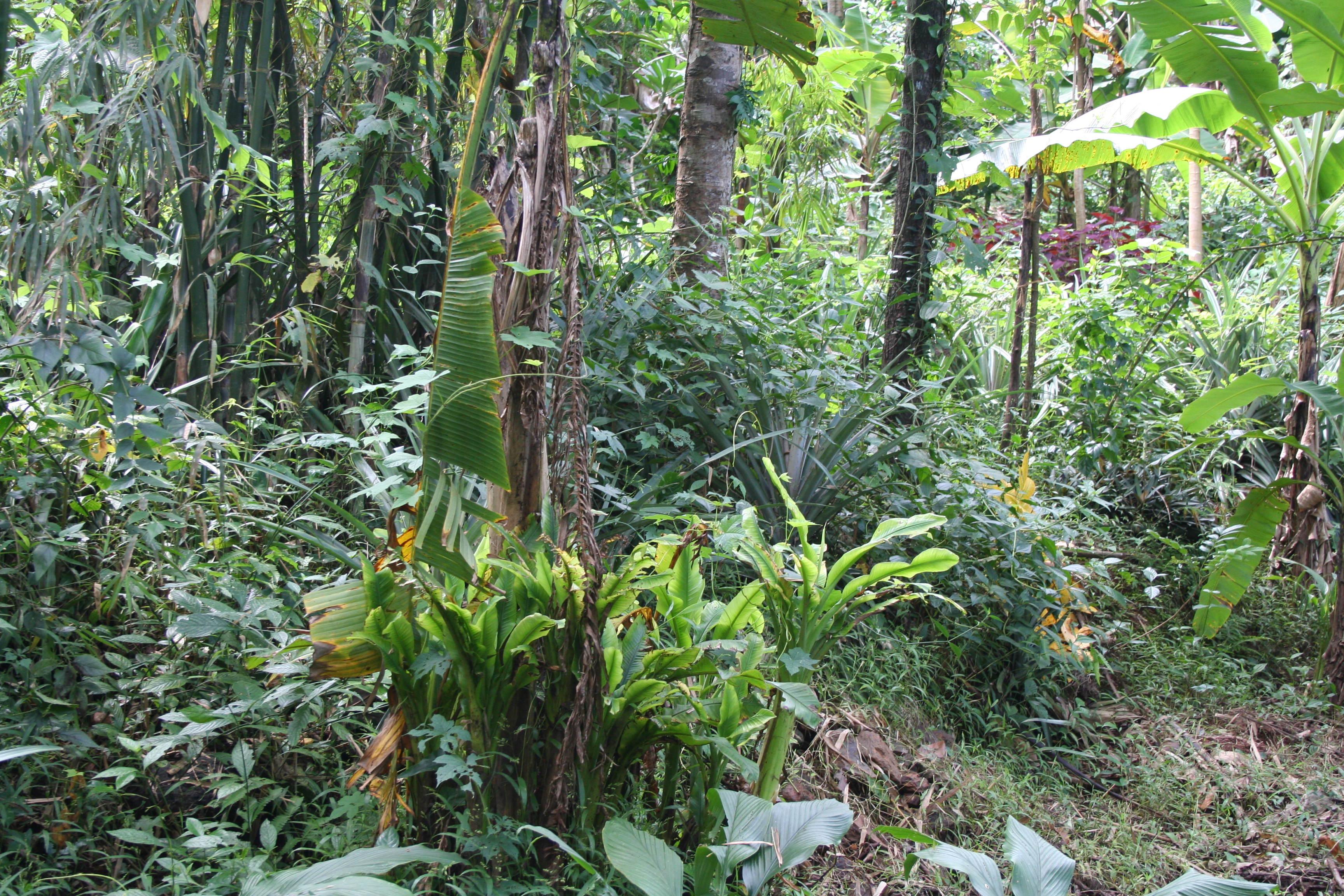
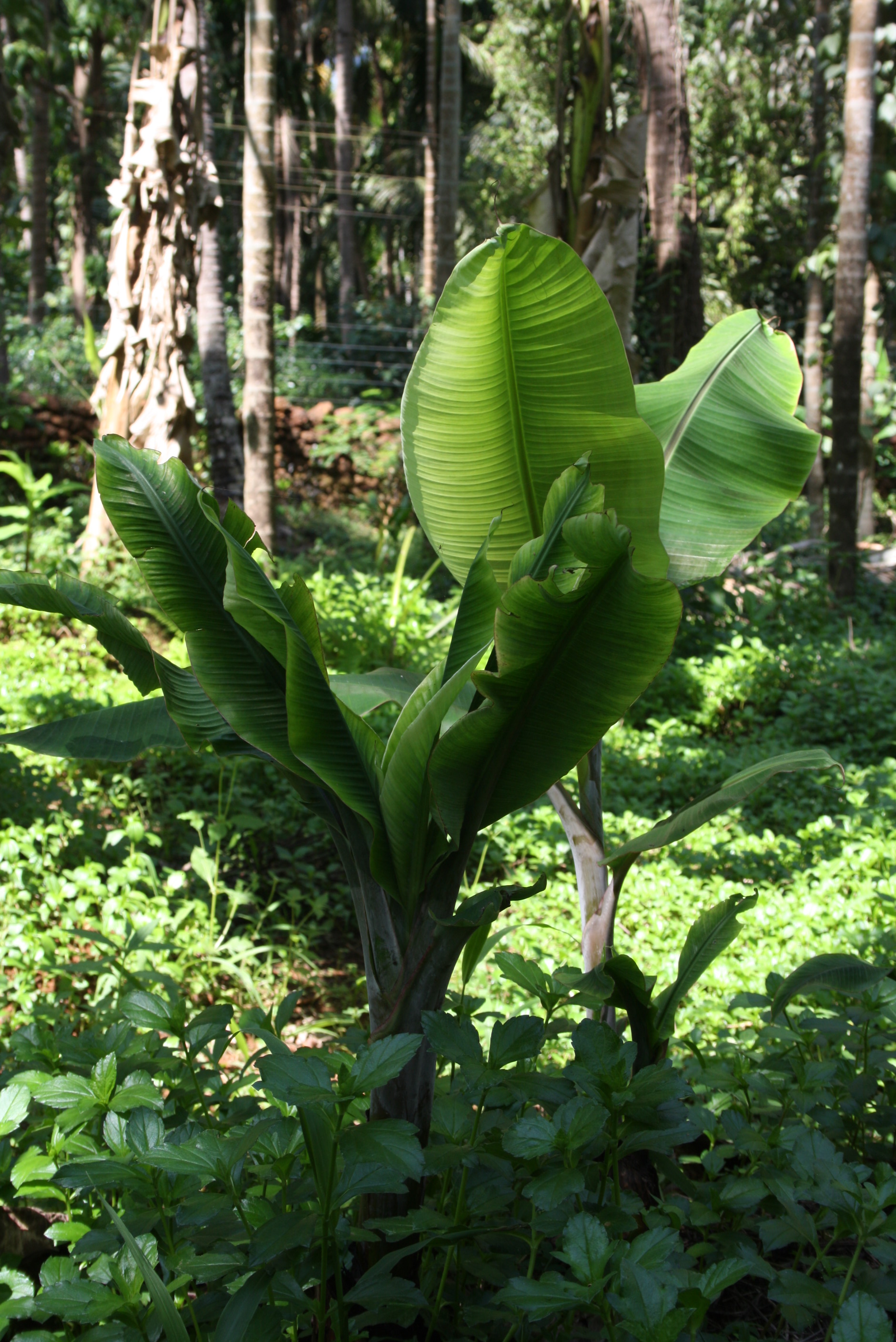
Symptoms
- The symptoms appear on any stage of crop growth.
- The infected plants have short, narrow, almost erect leaves with short petioles, giving the characteristic rosetted appearance at the top.
- The margin of the leaf becomes wavy and rolls upwards.
- Young leaves when examined against light, show dark green streaks along their midribs.
- The presence of interrupted dark green streaks along the secondary veins of the lamina or midrib of petiole is a typical symptom of bunchy top.
- The diseased plant remains stunted and do not produce bunch of any commercial value.
- The diseased plants neither die nor recover from the disease.
- The disease is transmitted to the plant by aphid vector, Pentalonia nigronervosa.
Management
- Planting material should not be collected from places affected by this disease.
- Eradicate the diseased plant, sucker and clumps, burn and bury them.
- The affected plant should be killed with kerosene or herbicide such as 2.4-D.
- Spray metasystox (0.2 to 0.5%) to control the spread of aphids
- Yellowing of lower leaves, including leaf blades and petioles, due to block in vascular system.
- Leaves hang around the pseudostem white middle of lamina is still green.
- Yellowish to reddish streaks observed in the pseudostem, when examined transversely.
- After 4 to 6 weeks, only the pseudostem remains, with the lead leaves hanging round it.
- Disease is severe in poorly drained soil light soil
- Uproot and burn the severely infected plant.
- Use disease �?free planting material and resistant cultivas
- Follow crop rotation with paddy
- Dip rhizomes in carbendazim (0.2%) before planting followed by bimonthly drenching.
- Application of biocontrol agents like Trichoderma; Pseudomonas @100g /plant at the time of planting
III.Panama wilt
Causal organism: Fusarium oxysporam f.sp. cubense
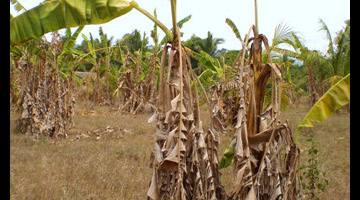
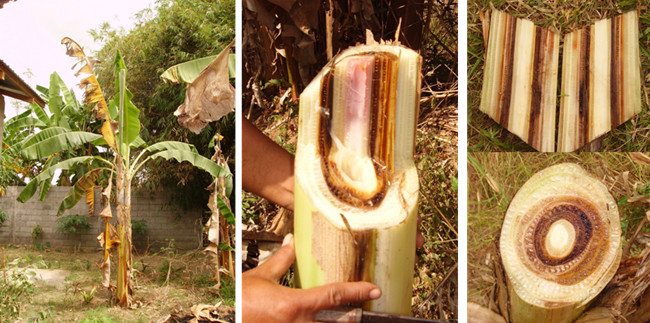
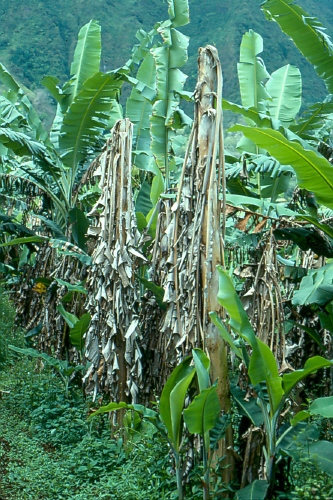
Symptoms:
Management
When banana is cultivated under coconut shade, the days taken for flowering as well as harvest gets prolonged by an average of one month. The bunches can be harvested after 3-4 months of flower emergence.(Table 1)
Table 1:
Cultivar |
Average bunch weight (Kg) |
Amti |
14 |
Raspali |
13 |
Velchi |
11 |
Saldatti |
9 |
Savarboni |
15 |
Myndoli |
16 |
Sugandi |
9 |
Grand Naine |
15-20 |
Robusta |
20-25 |
Dwarf Cavendish |
20-25 |
Banana fruits are used for culinary as well as dessert purpose. Value added products like custard, chips, halwa, cake, milk shake, cutlet, pan cake etc can be prepared. .
Input availability |
Address/Contact details |
| Plants | ICAR farm/ State Govt Farms |
Fertilizers |
For detailed list kindly click here |
Pesticides |
For detailed list kindly click here |
| Machineries | Goa Bagayatdar Stores |
|